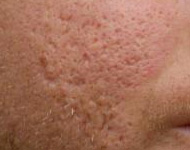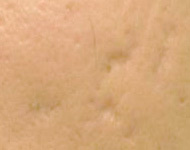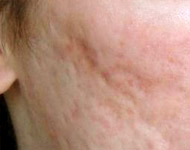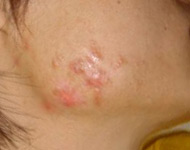

** Any claims regarding the duration or outcome of any treatment, procedure, or service provided are based on optimal results. Individual results may vary.
Acne Scar Treatment
Acne scars are stubborn, and no single treatment is best for everyone. However, various procedures can improve your complexion.
Laser treatments: In laser resurfacing, a laser beam destroys the outer layer of skin. As the wound heals, new skin forms. Less intense lasers cause less damage, but are also less effective.
Facial fillers: Injecting collagen or fat under the skin and into the acne scars can fill out or stretch the skin, making acne scars less noticeable. Results are temporary, so you'd need to repeat the injections periodically.
PRP Treatment: Platelet Rich Plasma (PRP) is on the cutting edge of regenerative therapies. The PRP process of using your body's own platelets (found in your blood), concentrate the platelets to up to 18 times baseline and injecting these platelets into the area that needs regeneration. This is a very effective treatment for acne scar.
Stem Cell Treatment: Regenerative medicine is described as the creation of tissues that can repair, replace, or restore biological structures and/or functions that may be lacking due to congenital defects, aging, disease, or destruction.
If you are interested in learning more about acne scar or any type of scars treatment, please feel free to contact us for a consultation appointment.
Types of acne scars

Ice pick
Ice pick scars are a common type of acne scarring. This type of scarring is characterized by deep pits that are usually less than 2mm across. They extend into the skin, giving the surface appearance of having been punctured by an ice pick.

Boxcar
Boxcar scars are also a common type of acne scarring. They are angular scars with sharp vertical edges, and resemble the scars left by chicken pox. Boxcar scars may be shallow or deep, and are most often found on the cheeks and temples.

Rolling
Rolling scars are caused by damage under the surface of the skin, and give the skin a wave-like appearance. They tend to be wide and shallow.

Hypertrophic
Hypertrophic scars are raised and lumpy. They tend to appear on the back and chest, but can also appear on the neck and face. They are often the result of more severe acne lesions, such as cysts or nodules. Hypertrophic scars generally stay within the boundary of the original wound, and may decrease in size as time goes on.

Before & After Photos





